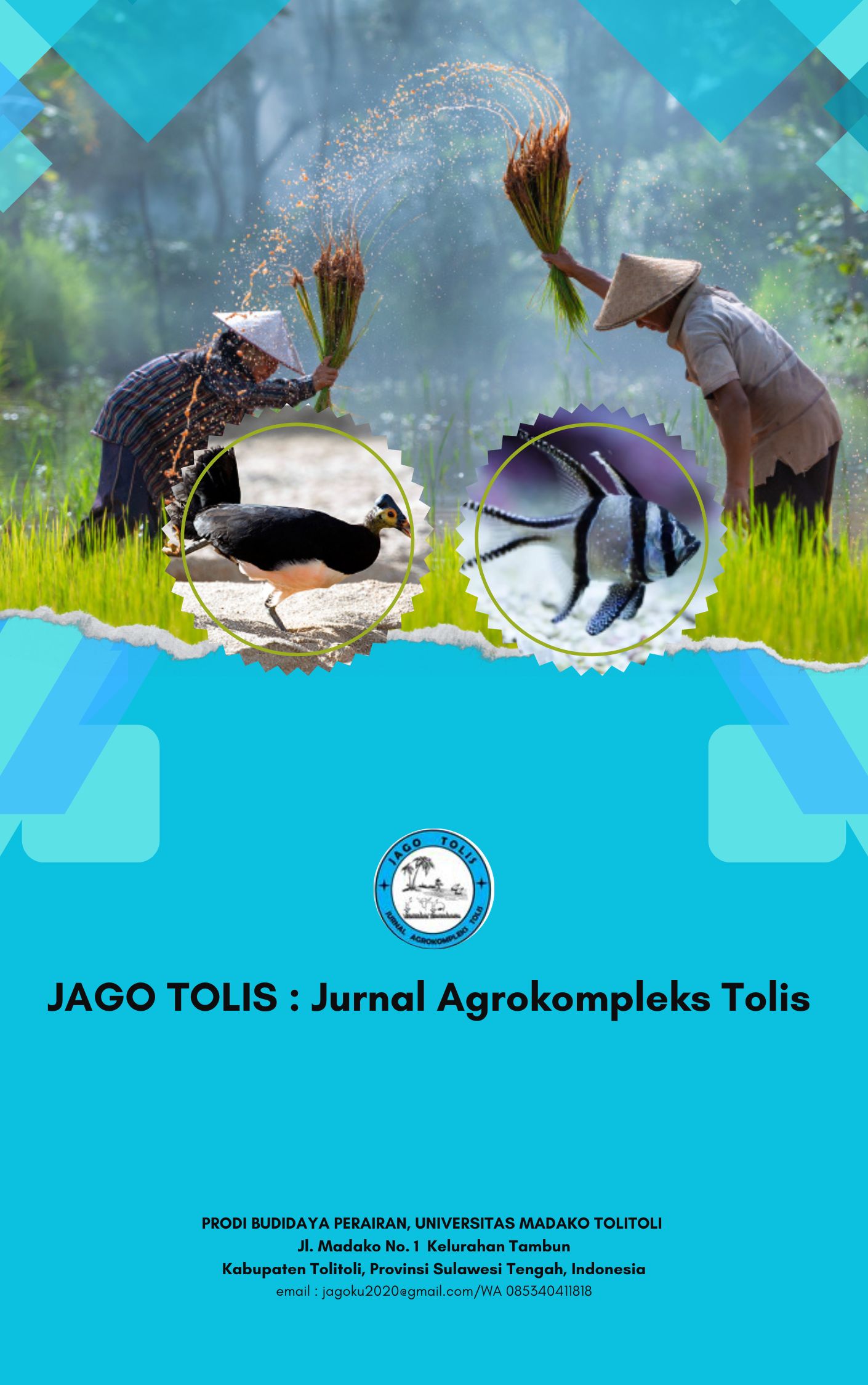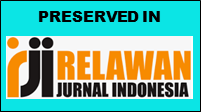The Impact of Coastal Livestock Activities on the Health of Dugong (Dugong dugon) Habitats: A One Health Approach in Tropical Regions
DOI:
https://doi.org/10.56630/jago.v6i1.1060Keywords:
Coastal livestock impacts, Dugong conservation, One health, Seagrass degradation, Tropical marine ecosystemsAbstract
The Dugong dugon a vulnerable marine herbivore, is closely tied to the health of seagrass ecosystems, which are increasingly threatened by land-based livestock activities in tropical coastal areas. This review explores how nutrient runoff, heavy metal contamination, and microplastics “primarily from livestock farming” contribute to eutrophication, biodiversity loss, and degradation of dugong forage quality. Moreover, the proximity of livestock to marine environments raises risks of zoonotic disease transmission, physiological stress, and mortality in dugongs. Using a One Health framework, this article highlights the ecological and health implications of terrestrial–marine interactions and identifies gaps in research and policy. Recommendations include integrated monitoring, sustainable livestock management, and transdisciplinary collaboration to protect dugong populations and their habitats.
References
Akbar, N., Marus, I., Ridwan, R., Baksir, A., Paembonan, R. E., Ramili, Y., Tahir, I., Ismail, F., Wibowo, E. S., & Madduppa, H. H. (2021). Feeding ground indications are based on species, seagrass density and existence of Dugong dugon in Hiri Island Sea, North Maluku, Indonesia. IOP Conference Series: Earth and Environmental Science, 890(1), 12058.
Alemayehu, K. D., Mitiku, B. A., Alemu, Y. F., & Nibret, T. B. (2024). Knowledge, attitude, and prevention practices towards common zoonotic diseases in and around Bahir Dar city, north western Ethiopia. Trans. and Emerg. Dis., 2024(1), 6642766.
Amany, C., Kamal, M. M., Kurniawan, F., & Sabila, V. (2022). Seagrass, dugong, and people: Lessons learned from community-based conservation in Tolitoli Regency, Sulawesi Tengah, Indonesia. IOP Conference Series: Earth and Env. Scie., 967(1), 12032.
Arunakumara, K., & Zhang, X. (2008). Heavy metal bioaccumulation and toxicity with special reference to microalgae. J. Oc. Univ. China, 7(1), 60–64.
Awadh, A., Mwakumanya, M., & Omar, M. (2024). The viability of seagrass ecosystems for supporting dugong recovery in Kenya. West. Indian Oc. J. Mar. Scie., 23(1), 19–26.
Bekker, J. L., Jooste, P. J., & Hoffman, L. C. (2012). Wildlife-associated zoonotic diseases in some southern African countries in relation to game meat safety: A review. Onderstepoort J. Vet. Res., 79(1), 1–12.
Burkholder, J., Libra, B., Weyer, P., Heathcote, S., Kolpin, D., Thorne, P. S., & Wichman, M. (2007). Impacts of waste from concentrated animal feeding operations on water quality. Env. Hea. Pers., 115(2), 308–312.
Cardoso, P. G., Raffaelli, D., Lillebø, A. I., Verdelhos, T., & Pardal, M. A. (2008). The impact of extreme flooding events and anthropogenic stressors on the macrobenthic communities’ dynamics. Est. Coa. and She. Scie., 76(3), 553–565.
Coles, R. G., Rasheed, M. A., Grech, A., & McKenzie, L. J. (2018). Seagrass Meadows of Northeastern Australia. In The Wetland Book (pp. 1967–1975). Springer.
Cong, Y., Jiang, Y., Zhang, M., Cao, S., Li, Q., Li, Z., Jin, F., Lou, Y., Wang, Y., & Shi, H. (2025). Impact of polyethylene terephthalate microfibers on histopathological and molecular responses induced by cadmium in the polychaete Perinereis aibuhitensis. Env. Pol., 369, 125822.
Cullen-Unsworth, L. C., Jones, B. L., Seary, R., Newman, R., & Unsworth, R. K. F. (2018). Reasons for seagrass optimism: local ecological knowledge confirms presence of dugongs. Mar. Pol. Bul., 134, 118–122.
Dewi, C. S. U., Wahyudi, S., Tarno, H., Ciptadi, G., & Wiadnya, D. G. R. (2024). Dugong dugon (Muller 1776) and Its Habitat in Coastal Areas and Small Islands of East Java Province, Indonesia. IOP Conference Series: Ear. and Env. Scie., 1328(1), 12003.
Dorgham, M. M. (2013). Effects of eutrophication. In Eutrophication: Causes, Consequences and Control: Volume 2 (pp. 29–44). Springer.
Gerstenbacher, C. M., Finzi, A. C., Rotjan, R. D., & Novak, A. B. (2022). A review of microplastic impacts on seagrasses, epiphytes, and associated sediment communities. Env. Pol., 303, 119108.
Grattarola, C., Pietroluongo, G., Belluscio, D., Berio, E., Canonico, C., Centelleghe, C., Cocumelli, C., Crotti, S., Denurra, D., & Di Donato, A. (2024). Pathogen Prevalence in Cetaceans Stranded along the Italian Coastline between 2015 and 2020. Path., 13(9), 762.
Grech, A., & Marsh, H. (2008). Rapid assessment of risks to a mobile marine mammal in an ecosystem‐scale marine protected area. Cons. Bio., 22(3), 711–720.
Heng, H. W. K., Ooi, J. L. S., Affendi, Y. A., Alfian, A. A. K., & Ponnampalam, L. S. (2022). Dugong feeding grounds and spatial feeding patterns in subtidal seagrass: A case study at Sibu Archipelago, Malaysia. Est., Coa. and She. Scie., 264, 107670.
Herrera, M., Tubío, A., Pita, P., Vázquez, E., Olabarria, C., Duarte, C. M., & Villasante, S. (2022). Trade-offs and synergies between seagrass ecosystems and fishing activities: A global literature review. Fron. in Mar. Scie., 9, 781713.
Hines, E., Adulyanukosol, K., Duffus, D., & Dearden, P. (2005). Community perspectives and conservation needs for dugongs (Dugong dugon) along the Andaman coast of Thailand. Env. Man., 36, 654–664.
Hines, E., Adulyanukosol, K., Somany, P., Ath, L. S., Cox, N., Boonyanate, P., & Hoa, N. X. (2008). Conservation needs of the Dugong dugong dugon in Cambodia and Phu Quoc Island, Vietnam. Oryx, 42(1), 113–121.
Karlina, I., Kurniawan, F., & Idris, F. (2018). Pressures and status of seagrass ecosystem in the coastal areas of North Bintan, Indonesia. E3S Web of Conf., 47, 4008.
Komita, B., Weaver, R., McClain, N., & Fox, A. (2024). Natural and Engineered Ocean Inflow Projects to Improve Water Quality Through Increased Exchange. J. Mar. Scie. and Eng., 12(11), 2047.
Lanyon, J. M., Sneath, H. L., Long, T., & Bonde, R. K. (2010). Physiological response of wild dugongs (Dugong dugon) to out-of-water sampling for health assessment. Aqu. Mam., 36(1).
LeJeune, J., & Kersting, A. (2010). Zoonoses: an occupational hazard for livestock workers and a public health concern for rural communities. J. Agr. Saf. and Hea., 16(3), 161–179.
Liu, Y., & Zeng, H. (2024). Spatial–temporal differentiation and control strategies of nitrogen environmental loss in China’s coastal regions based on flow analysis. J. Env. Man., 351, 119667.
Long, M. H., & Mora, J. W. (2023). Deoxygenation, acidification and warming in Waquoit Bay, USA, and a shift to pelagic dominance. Est. Coa., 46(4), 941–958.
Maitland, R. N., Lawler, I. R., & Sheppard, J. K. (2006). Assessing the risk of boat strike on Dugongs Dugong dugon at Burrum Heads, Queensland, Australia. Pac. Con. Bio., 12(4), 321–326.
Marsh, H., Grech, A., & McMahon, K. (2018). Dugongs: seagrass community specialists. Seagr. Austr.: Struc. Eco. and Cons., 629–661.
Marsh, H., & Kwan, D. (2008). Temporal variability in the life history and reproductive biology of female dugongs in Torres Strait: The likely role of sea grass dieback. Cont. Shelf Res., 28(16), 2152–2159.
Meidina, T. S. A., Kamal, M. M., Kurniawan, F., Darusman, H. S., & Digdo, A. A. (2023). Seagrass diversity and dugong observation in North Minahasa Regency, North Sulawesi. IOP Conference Series: Earth and Environmental Science, 1137(1), 12054.
Moore, A. M., Ambo-Rappe, R., & Ali, Y. (2017). “The lost princess (putri duyung)” of the small islands: Dugongs around Sulawesi in the anthropocene. Front. Mar. Scie., 4, 284.
Moresco, A., Feltrer‐Rambaud, Y., Wolfman, D., & Agnew, D. W. (2022). Reproductive one health in primates. American J. Prim., 84(4–5), e23325.
Narwal, N., Kakakhel, M. A., Katyal, D., Yadav, S., Rose, P. K., Rene, E. R., Rakib, M. R. J., Khoo, K. S., & Kataria, N. (2024). Interactions between microplastic and heavy metals in the aquatic environment: Implications for toxicity and mitigation strategies. Water, Air, & Soil Pollution, 235(9), 567.
Neverova-Dziopak, E. (2018). Towards a sustainable approach to wastewater treatment strategy for eutrophication abatement. E3S Web of Conf., 45, 56.
Noor, N. M., & Abdul Maulud, K. N. (2022). Coastal vulnerability: a brief review on integrated assessment in Southeast Asia. J. Mar. Scie. and Eng., 10(5), 595.
O’Leary, B. C., Copping, J. P., Mukherjee, N., Dorning, S. L., Stewart, B. D., McKinley, E., Addison, P. F. E., Williams, C., Carpenter, G., & Righton, D. (2021). The nature and extent of evidence on methodologies for monitoring and evaluating marine spatial management measures in the UK and similar coastal waters: a systematic map. Env. Evid., 10(1), 13.
Owen, H., Gillespie, A., & Wilkie, I. (2012). Postmortem findings from dugong (Dugong dugon) submissions to the University of Queensland: 1997–2010. J. Wild. Dise., 48(4), 962–970.
Pasumpon, N., & Vasudevan, S. (2021). Seasonal variation of heavy metals in seagrasses along Thondi coast, Palk Bay, India. Env. Scie. and Poll. Res., 28(21), 26849–26857.
Quiros, T. E. A. L., Croll, D., Tershy, B., Fortes, M. D., & Raimondi, P. (2017). Land use is a better predictor of tropical seagrass condition than marine protection. Bio. Cons., 209, 454–463.
Rangel-Buitrago, N., Ben-Haddad, M., Galgani, F., da Silva, C. P., & Neal, W. J. (2024). Understanding the animal waste issue on World beaches. Oce. & Coa. Man., 256, 107287.
Richter, C. H., Custer, B., Steele, J. A., Wilcox, B. A., & Xu, J. (2015). Intensified food production and correlated risks to human health in the Greater Mekong Subregion: a systematic review. Env. Heal., 14(1), 43.
Sampat, A. M., Hicks, A., Ruiz-Mercado, G. J., & Zavala, V. M. (2021). Valuing economic impact reductions of nutrient pollution from livestock waste. Reso., Cons. and Recy., 164, 105199.
Sarma, D., & Kumar, D. (2024). Eutrophication in freshwater and its microbial implications. In Handbook of Aquatic Microbiology (pp. 194–209). CRC Press.
Scavia, D., & Bricker, S. B. (2006). Coastal eutrophication assessment in the United States. Biogeochemistry, 79(1), 187–208.
Sharma, R., & Kumari, L. (2023). Mapping of Heavy Metal Pollution in River System: A Scientometric Approach. J. Scien. Rese., 12(2), 332–342.
Sheppard, J. K., Marsh, H., Jones, R. E., & Lawler, I. R. (2010). Dugong habitat use in relation to seagrass nutrients, tides, and diel cycles. Mar. Mam. Scie., 26(4), 855–879.
Shimizu, A., Takada, H., Koike, T., Takeshita, A., Saha, M., Nakada, N., Murata, A., Suzuki, T., Suzuki, S., & Chiem, N. H. (2013). Ubiquitous occurrence of sulfonamides in tropical Asian waters. Scie. Tot. Env., 452, 108–115.
Tang, K. H. D. (2024). Microplastics in seagrass ecosystems: a review of fate and impacts. Res. Ecol, 6, 41–53.
Thibault, M., Letourneur, Y., Cleguer, C., Bonneville, C., Briand, M. J., Derville, S., Bustamante, P., & Garrigue, C. (2024). C and N stable isotopes enlighten the trophic behaviour of the dugong (Dugong dugon). Scie. Rep., 14(1), 896.
Thomsen, E., Herbeck, L. S., & Jennerjahn, T. C. (2020). The end of resilience: Surpassed nitrogen thresholds in coastal waters led to severe seagrass loss after decades of exposure to aquaculture effluents. Mar. Env. Rese., 160, 104986.
Tiemann, T., & Douxchamps, S. (2023). Opportunities and challenges for integrated smallholder farming systems to improve soil nutrient management in Southeast Asia. Wor. Dev. Sust., 3, 100080.
Todd, P. A., Ong, X., & Chou, L. M. (2010). Impacts of pollution on marine life in Southeast Asia. Biodi. and Cons., 19(4), 1063–1082.
Ugarelli, K., Laas, P., & Stingl, U. (2018). The microbial communities of leaves and roots associated with turtle grass (Thalassia testudinum) and manatee grass (Syringodium filliforme) are distinct from seawater and sediment communities, but are similar between species and sampling sites. Microorganisms, 7(1), 4.
Unsworth, R. K. F., Ambo-Rappe, R., Jones, B. L., La Nafie, Y. A., Irawan, A., Hernawan, U. E., Moore, A. M., & Cullen-Unsworth, L. C. (2018). Indonesia’s globally significant seagrass meadows are under widespread threat. Scie. Tot. Env., 634, 279–286.
Wanapat, M., Kongmun, P., Chanthakhoun, V., Cherdthong, A., & Pilajun, R. (2010). Use of Local Feed Resources to Improve Rumen Fermentation and Reduce Methane Production in Buffalo Production in Southeast Asia. Rev. Vet., 21(1).
Wang, B., Liu, K., Sakornwimon, W., Huang, W., Li, T., Lai, X., Li, C., Zhao, L., Cong, B., & Liu, S. (2025). Spatial planning for dugong conservation: Assessing habitat suitability and conservation gaps in Indo-Pacific Convergence Zone. Mar. Pol., 180, 106777.
Wang, L., Gao, Y., Jiang, W., Chen, J., Chen, Y., Zhang, X., & Wang, G. (2021). Microplastics with cadmium inhibit the growth of Vallisneria natans (Lour.) Hara rather than reduce cadmium toxicity. Chemosphere, 266, 128979.
White, A. T. (2008). Status of coastal and marine resources: implications for fisheries management and poverty in southeast Asia. Poverty Reduction through Sustainable Fisheries: Emerging Policy and Governance Issues in Southeast Asia, 199–232.
Wund, S., Méheust, E., Dars, C., Dabin, W., Demaret, F., Guichard, B., Jauniaux, T., Labrut, S., Spitz, J., & Van Canneyt, O. (2023). Strengthening the health surveillance of marine mammals in the waters of metropolitan France by monitoring strandings. Fron. Mar. Scie., 10, 1116819.
Yamamuro, M., & Chirapart, A. (2005). Quality of the seagrass Halophila ovalis on a Thai intertidal flat as food for the dugong. J. Ocea., 61(1), 183–186.
















